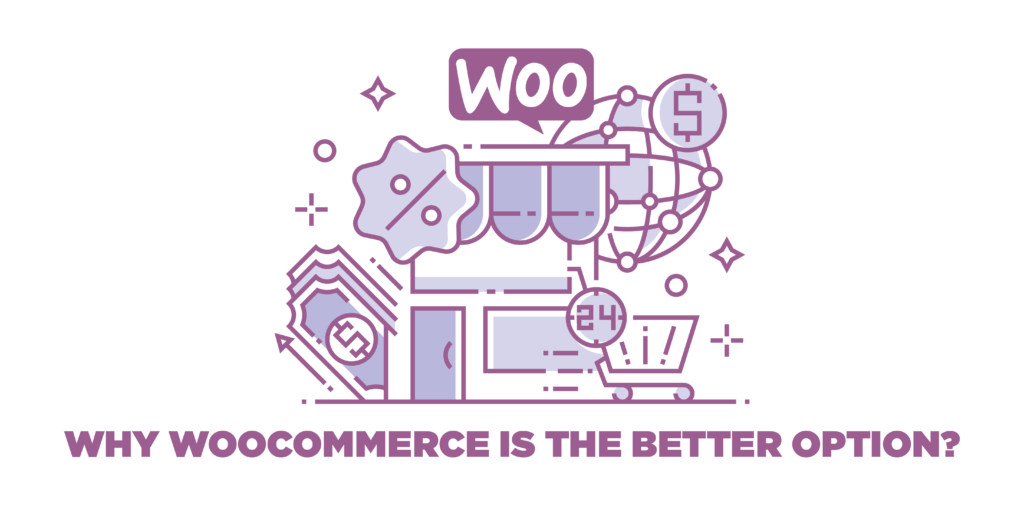If you are currently using Shopify to run your business, it’s a great choice, but it’s limited in its application. Shopify is among the best eCommerce platforms available, it provides managed-hosting, it has a team of experts to carry out every task for you, and it provides many features out-of-the-box. So why would you ever need to migrate? Because Shopify is a SaaS-based platform, which means customization is complex and limited, it’s maintenance is also costly as your business increases, and has limited and expensive options in terms of products, thus the need arises to migrate your store from Shopify to WooCommerce.
But why WooCommerce? Because WooCommerce is a completely customizable, scalable, and flexible platform that can give you the freedom to create a store you want.
Since migrating your store to another eCommerce platform can be tricky. We have prepared this complete guide to show you how it’s done manually, what plugins are best, etc. But first, let’s see why we should choose WooCommerce as an alternative option.
WooCommerce is the best eCommerce platform available with 29% market share. Here are the
reasons Why WooCommerce is Leading.
Shopify & WooCommerce – Pros and Cons
Our list of pros and cons might convince you to migrate your store from Shopify to WooCommerce. So let’s get started!
WooCommerce

Pros
- Open-source eCommerce platform.
- Completely customizable and flexible.
- Multiple features are available out-of-the-box.
- Provides unlimited options for plugins and extensions, both paid and free.
- Compatible with 3rd-party plugins and products.
Cons
- Live chat and call support not available.
- Need to install WordPress.
- Hosting, domain, and SSL certificates not available out-of-the-box.
Shopify

Pros
- Hosted eCommerce platform.
- Excellent for beginners with an intuitive user interface.
- 24/7 customer support available.
- Takes care of security and hosting.
Cons
- Limited options for plugins and extensions.
- Although has an extensive themes library, only a few of them are available for free.
- Overall cost increases as your business grow.
- Doesn’t allow you to customize themes and plugins.
We have compared the two best platforms – WooCommerce vs Shopify – to find out which one is better.
Why You Should Consider Moving from Shopify to WooCommerce?

There are many reasons why you should migrate your store from Shopify to WooCommerce. We are going to list some of them below.
1. Pricing
WooCommerce is a free open-source eCommerce platform, which means you have to pay no monthly charges to use its many functionalities. WooCommerce enables you to have complete control over your budget. For example, the only essential things you need when opening an online store using WooCommerce is hosting, an SSL certificate, and a domain name.
In terms of hosting, WooCommerce recommends SiteGround, Pressable, and BlueHost. BlueHost provides hosting, SSL certificates, and a 1-Click installation, all for $3.95/mo. Whereas a domain name can cost $5-$10/yr. So overall, the startup costs are extremely low as compared to Shopify.
2. Out-of-the-box Features
One of the major advantages of WooCommerce is the multiple features it provides for free. After activation, WooCommerce provides product management, inventory, a complete shopping cart system, applying coupons and discounts, optimizing SEO, and much more. For example, both Shopify and WooCommerce are compatible with major payment gateways like PayPal, Stripe, etc. But with WooCommerce, you can get access to 100+ payment gateways from 3rd-party sources. WooCommerce also does not charge any additional transactional fees as compared to Shopify.
Moreover, as it is built upon WordPress, you can also post SEO optimized content and rank your website higher on search engines.
Streamline cashflow and give your customers multiple payment options with the Best WooCommerce Payment Gateways.
3. Plugins and Extensions
WooCommerce has an extensive marketplace filled with many themes, plugins, and extensions, both free and paid available. It provides thousands of options for each function and thus you can greatly improve the customer experience on your online store. WooCommerce has multiple free plugins available and even its premium extensions are justly priced. Moreover, you only have to pay for the functions that you need.
4. Customizability
In terms of customization, there is no eCommerce platform as strong as WooCommerce. WooCommerce is preferred by both developers and beginners as it has a flexible and customizable source code that can easily be altered to make changes in themes, plugins, extensions, etc. Whereas in Shopify, you cannot customize the free themes and even changes in plugins and design would require a professional.
Getting confused? No need. We have prepared this complete guide which will help you in getting started with WooCommerce easily.
Best Migration Plugins
There are many ways to perform Shopify to WooCommerce migration, but the easiest among them is using a plugin to handle the transfer over. We have shortlisted some of the best migration plugins available so you can make a well-informed decision.
1. LitExtension

LitExtension is one of the best Shopify to WooCommerce migration tools. In just 3 simple steps, you can transfer products, orders, and customers within a few hours without any expert help. How does it work? All you have to do is add Shopify as “source cart” from the dropdown list by entering the URL, then select WooCommerce as the “Target cart”, and lastly, select the data you want to migrate.
Key Features
- You can transfer products, categories, customers, orders, coupons, blogs, etc.
- You can also migrate additional images.
- The plugin migrates short and full description.
- It also strips HTML from categories and products to display them correctly on your WooCommerce store.
To download, click here.
2. Cart2Cart

Cart2Cart is another Shopify to WooCommerce migration tool that enables you to transfer your data within a few hours. Moreover, its working is the same as LitExtension and you can transfer manufacturers, customers, orders, products, blog posts, CMS pages, and much more. It is a safe and secure migration tool that offers flexible pricing and tons of additional features.
Key Features
- 24/7 customer support available.
- Migration is carried out on a separate server.
- You can migrate images from products, blogs, and category descriptions.
- You can clear the data on the target store before migration.
- Extra services available are Hand of Help and Transfer it All.
To download, click here.
Customize your store with the Best WooCommerce Plugins available and improve accessibility and user experience.
3. S2W – Import Shopify to WooCommerce

This is an easy and simple plugin that enables you to transfer all your products from Shopify to WooCommerce quickly. All you have to do is enter the correct API and domain. It also provides multiple options to customize the transfer according to your needs.
Key Features
- You can change the sequence in which products are imported such as date created, date updated, or title.
- All product variations are also imported.
- You can check the status of your products and also review the download process in log files.
- The PRO version enables you to import products by Webhooks, IDs, CSV files, etc.
To download, click here.
Process of Migrating From Shopify to WooCommerce

If you don’t want to use plugins to migrate your store from Shopify to WooCommerce, you can either hire a professional or do it yourself. Let’s find out which option is best suited for your needs.
1. Hire a Professional
If you don’t rely on your abilities to perform Shopify to WooCommerce migration, there are many experts available that can easily do the job for you. WooCommerce is a widely popular eCommerce platform and thus has many developers available that excel in their niche.
Since WooCommerce does not provide customer support on their own, they have hand-picked a bunch of WooExperts that are the best from the best. You can filter them according to your country and budget and get the help you need.
2. Manually Import/Export Products
If you don’t want to spend money on plugins or professionals, then you can also manually import products, customers, orders, etc from Shopify to WooCommerce.
First, you need to export CSV format files from Shopify. All you have to do is go to Shopify > products > All products > click on export to display a pop-up with options. You can choose the file format here and then click on export. You need to repeat this process for customers, orders, blogs, etc.
Next, go to WooCommerce > Products > and click on the import button at the top of the page. Here you will upload the CSV files you want to import and click on continue. The next page is the Column Mapping Screen, here WooCommerce automatically maps the column name of Shopify to WooCommerce products, you can also make tweaks and changes through the dropdown menus available.
Lastly, click on the “Run Importer” button to complete the process.
With WooCommerce, you can open-up any type of store. Find out the Alternative Uses of WooCommerce and manage your business easily.
Wrap-Up: Let’s Migrate it
Although you don’t have to spend a single penny when migrating manually from Shopify to WooCommerce but you can certainly make the job easier by using a plugin and automate the process to focus on other aspects of the business. The choice depends on the number of products, files, and your budget. Once the migration is completed, your WooCommerce store is ready to start selling products and accepting payments. We hope this article helped to answer your queries regarding Shopify to WooCommerce migration.



